Gingerbread landmarks of the UK
- Published
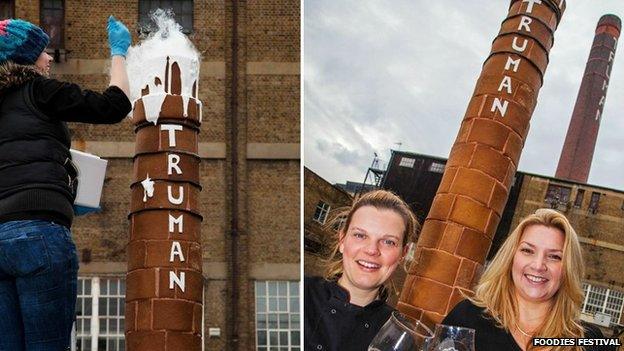
Chimney creator Daisy Brydon said gingerbread sculpture "gets us all in the festive spirit"
As an 8ft (2.4m) gingerbread chimney is erected for a food festival this weekend in London, external, bakers around the UK are creating edible landmarks in the name of Christmas, commerce and craft.
In Stratford-upon-Avon, Warwickshire, a pastry chef has created a replica of one of the town's hotels.
Petar Stoykov said it took six days to bake and assemble the Welcombe Hotel out of butter, flour, eggs, sugar and spices.
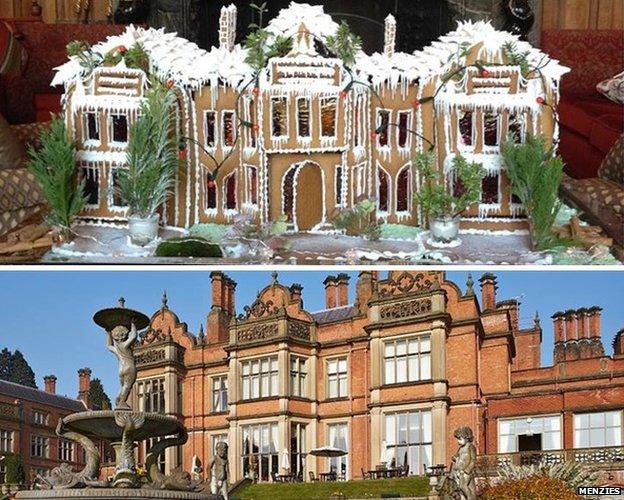
Pastry chef Petar Stoykov's gingerbread hotel
So is the art of creating the country's landmarks in gingerbread a new craze?
Frances Quinn. winner of The Great British Bake Off 2013, said: "Gingerbread and baking sculptures are quite literally growing and the enthusiasm for GBBO and baking has a lot to do with the surge in sugar-related sculptures."
Earlier this year she created a model of Europe's tallest building, The Shard, in gingerbread alongside other London landmarks including the BT Tower and the London Eye.

Everything in Frances Quinn's sculpture was edible, including The Shard's boiled sugar "glass" windows
Gingerbread itself is even older than the cathedrals and castles talented cooks have started creating, according to food writer Maguelonne Toussaint-Samat.
She said gingerbread originated in China as a kind of honey bread in the 10th Century.
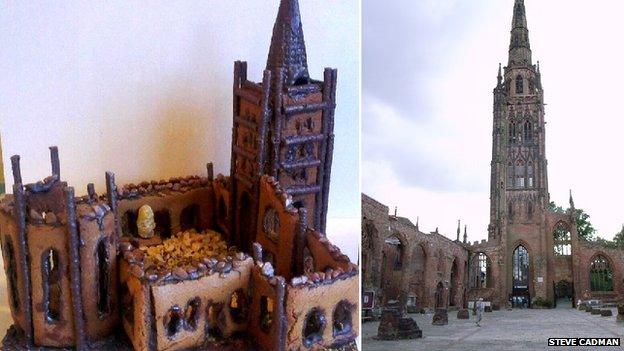
Siobhan Harrison used a jelly baby to represent Coventry Cathedral's Jacob Epstein sculpture Ecce Homo
In Europe it was moulded and shaped for religious festivals like Easter and Christmas and these Christian links have been celebrated by Siobhan Harrison, who made a model of the former Coventry Cathedral out of gingerbread.
Pupils at King's Bruton school in Somerset recreated Wells Cathedral for its edible display, which also included a gingerbread Glastonbury Festival, Roman Baths and Bristol's Clifton Suspension Bridge.
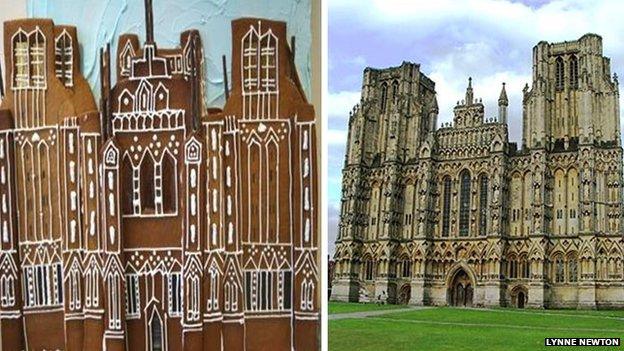
Pupils at King's Bruton school replicated Wells Cathedral in gingerbread
Gingerbread sculpture is believed to have started in Germany, according to food writer Victoria Japlon, but decorating gingerbread houses did not take hold until the publishing of Hansel and Gretel by the Brothers Grimm.
In that 19th Century folktale two children were trapped by a witch who had a house made of gingerbread and sweets.
Even before this story, many English towns already laid claim to producing unique variations of gingerbread. These are still sold in Market Drayton, Shropshire, Grantham, Lincolnshire, and Grasmere, Cumbria.
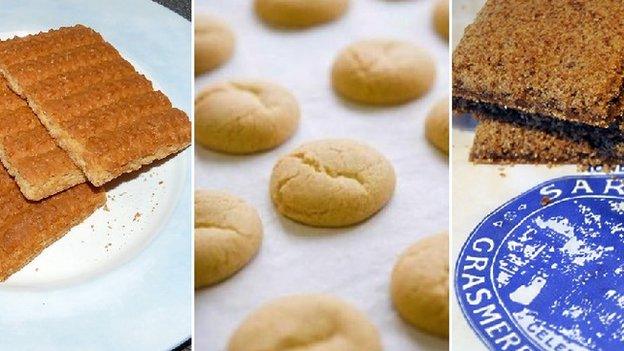
Unique gingerbread recipes are claimed by Market Drayton, Grantham and Grasmere
Gingerbread certainly has a history that endures, but what will happen to the less durable creations of our well-loved landmarks?
Tanya Aspinwall, representing the Welcombe Hotel in Stratford-upon-Avon, said: "I don't think it would be very edible in the new year - probably a bit soft."
No such fears were voiced for Mrs Harrison's Coventry Cathedral creation, which she said was thoroughly enjoyed by her daughters Matilda and Jemima.
- Published27 November 2014

- Published8 November 2014

- Published14 December 2013
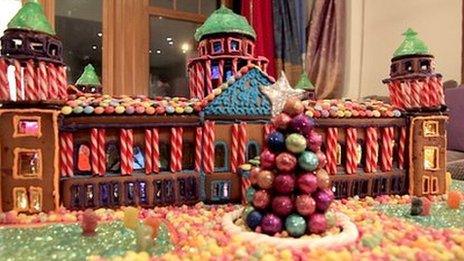
- Published13 December 2013
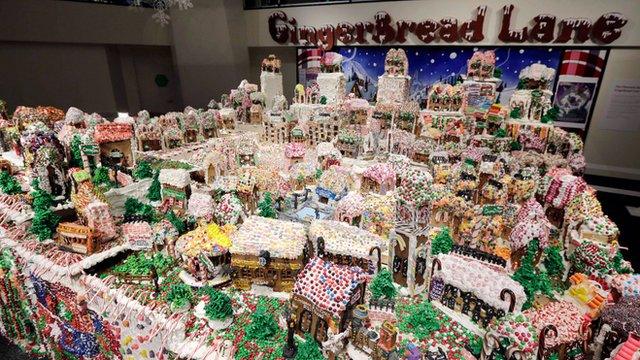
- Published12 December 2012
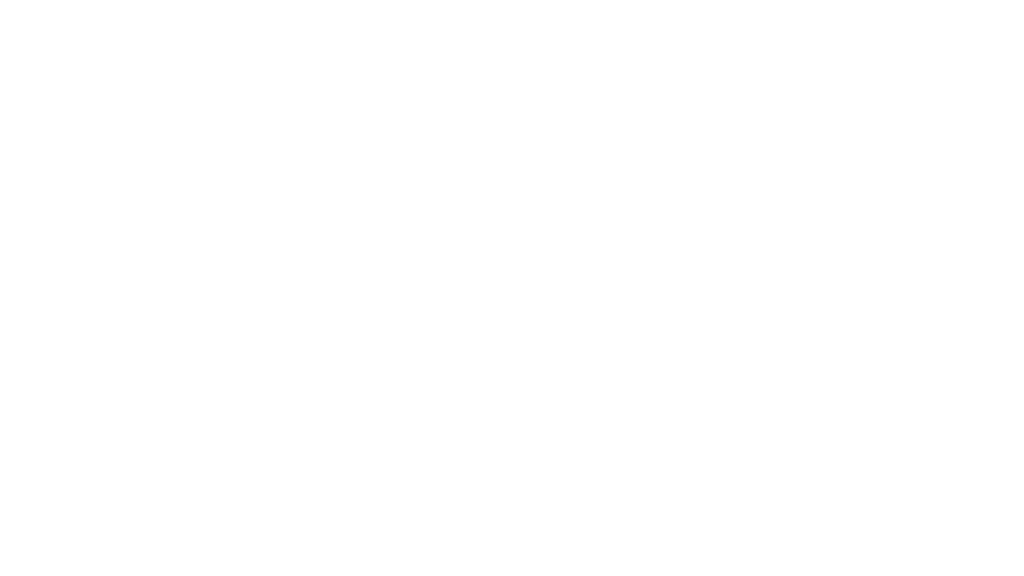
- Published8 November 2013
